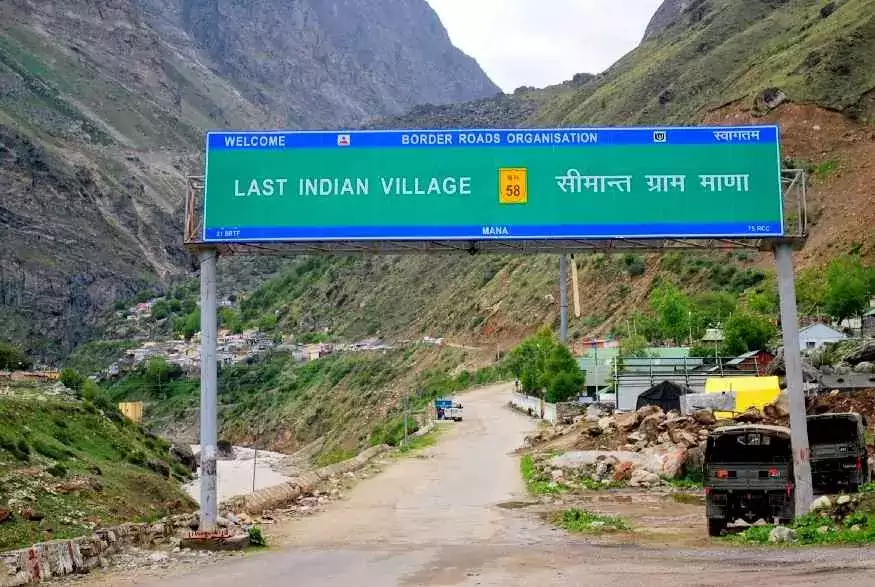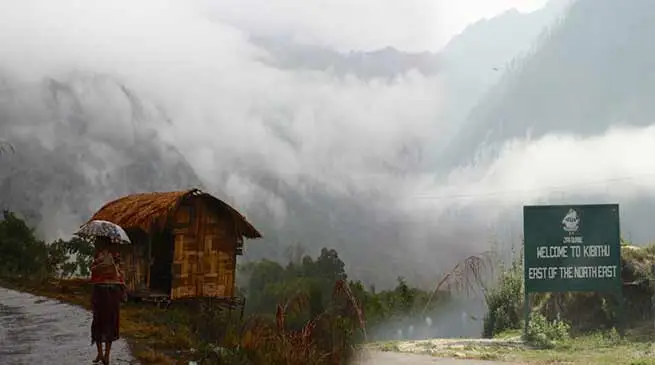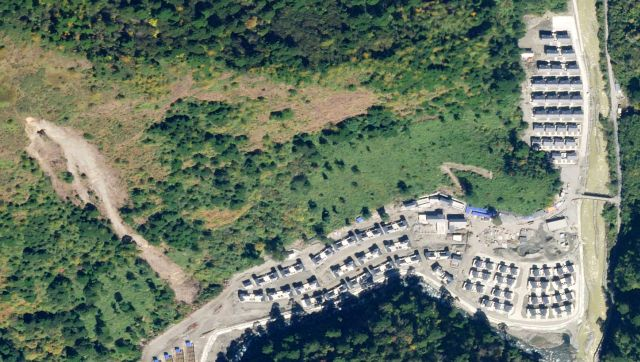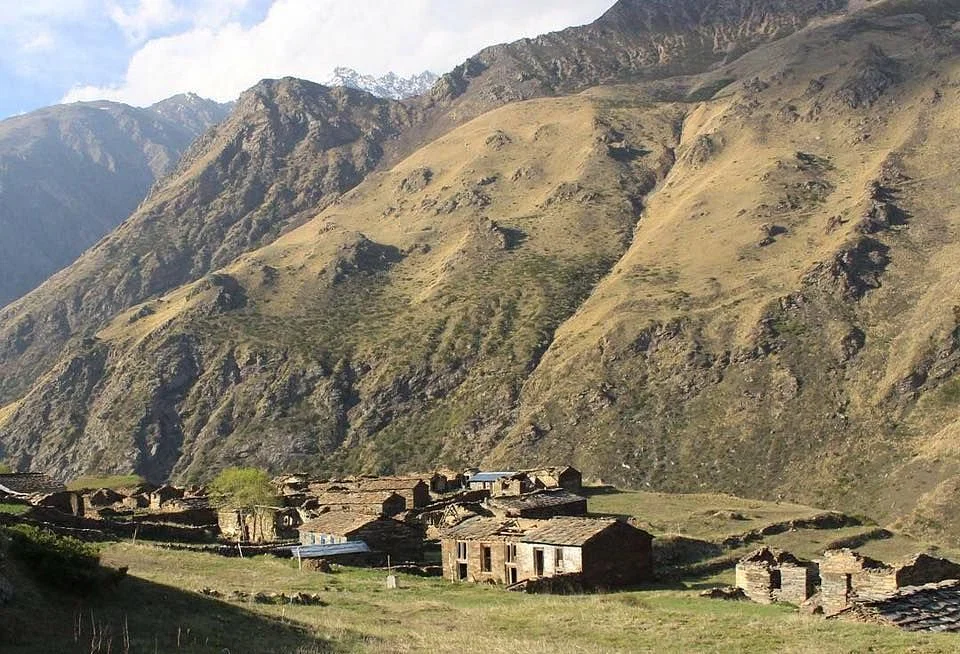Arunachal Pradesh’s eastern Anjaw district is home to Kibithoo, in which the ambitious “Vibrant Village Program” (VVP) was recently introduced by Union Home Minister Amit Shah.

India’s reaction to China’s construction of 628 model “xiaokang” (moderately well-off) villages along the LAC in China-occupied Tibet is the VVP (CoT). China began construction of these communities, which serve both civilian and military purposes, in 2017 and finished it in 2021 at a staggering cost of Rs 3.76 lakh crore.
In 19 border districts in Arunachal Pradesh, Sikkim, Uttarakhand, Himachal Pradesh, and Ladakh, India has identified 2,967 villages that would be developed under the VVP.
662 communities will be created during the project’s first phase, which will span three fiscal years from 2024–2024 to 2025–2026. 455 of them are in the state of Arunachal Pradesh.
Amit Shah took a helicopter to Kibithoo, which is 40 kilometres west of the tri-junction between India, Burma, and the CoT and eleven kilometres south of the Line of Actual Control (LAC). In the first phase (20 to 28 October) of the 1962 Indo-China border conflict, Chinese soldiers occupied Kibithoo, one of the most distant circle headquarters in Arunachal Pradesh.
“Vibrant Village Program”

The chosen villages will receive potable piped water, round-the-clock power (including solar and wind energy), decent mobile and internet access, healthcare, and improved livelihood alternatives through the VVP. The villages will also be connected by all-weather roads.
The main goal is to both stop villagers’ migration from these rural habitats to cities in quest of greater economic opportunities and to encourage reverse migration.
The chief minister of Arunachal Pradesh, Pema Khandu, claims that the absence of employment possibilities in these isolated communities is the key driver of migration.
He said, “The absence of adequate infrastructure, healthcare, and educational facilities further encourages migration out of such villages.”
But, maintaining all of the villages along the LAC inhabited is crucial from a strategic and security standpoint, according to GOC-in-C of Eastern Command Lt. Gen. R P Kalita.
This is the rationale for China’s construction of the LAC model communities. The eastern army commander explained, “We need to encourage the people of villages on our side of the LAC to stay there, and for that to happen we need to offer them with all modern infrastructure and decent livelihood possibilities.
Many programmes for generating a living have been included into the VVP. Beekeeping is one among them, along with raising agricultural yields, promoting handicrafts and regional goods, and opening up markets for them.
The promotion of upscale tourism and the training of locals to serve visitors are core aspects of the programme to improve livelihoods.
“We will provide locals grants and loans to create homestays targeted at mid- to high-end guests, as well as the necessary training to manage these facilities effectively. Glamping tourism promotion in and around Kibithoo is also planned, according to Chief Minister Khandu.
The program’s provision of 24 hour power to these isolated environments is another essential element.
He added that “We will build micro-hydel power plants that produce between five and one hundred kilowatts of energy if it is not viable to provide power from the state grid owing to the area’s remoteness and topography. In order to produce electricity, we will also install windmills and solar power systems.
Chowna Mein, the deputy chief minister of Arunachal Pradesh, informed news agencies that Kibithoo will receive up-to-date medical and educational facilities within a year.
“Many new job opportunities will arise. We are developing a strategy to offer free computer and electronics training to young people in the area. Also, artisans will receive training from specialised institutes to expand their knowledge and produce top-tier goods. For their products, the government would offer market connections, the deputy CM stated.
According to Chowna Mein, Kibithoo, which is situated at a height of 4,281 feet on the perennial Lohit river’s right bank, offers enormous potential for horticulture and floriculture.
To promote these areas, organisations like the Indian Council of Agricultural Research (ICAR) and others are being engaged. The farmers of Kibithoo will receive free training and modern inputs, and once more, strong market connections will be fostered to guarantee they receive high returns for their crops.
Less than 2,000 people currently live in Kibithoo, and the majority of the 320 homes there have two or more members who reside in the state’s or the rest of the country’s metropolitan centres.
After a few years, it is intended to have at least some of Kibthoo’s sons and daughters return to their native village.
“Under the VVP, the standard of living in the border villages will significantly increase, as will the prospects for employment and the income of the inhabitants.” A reverse migration would result from it, according to Chief Minister Khandu.
Lt. Gen. Kalita explained: “These border communities’ residents serve as the army’s eyes and ears. Well-populated communities on our side of the LAC operate as a potent deterrent to China’s nefarious expansionist strategies, particularly its salami-slicing strategies. China finds it difficult to readily claim populous areas. A similar experiment (although on a lesser scale) initiated a year ago by the Indian Army at Kaho, a little over two kilometres north of Kibithoo, has produced encouraging results. Kibithoo will be the first village to be created under the VVP.
Similar action plans for the development of border villages in the state have already been developed by the authorities of Arunachal Pradesh, the Ministry of Development of the North Eastern Region (MDoner), different Union Ministries, and the Indian Army.
The state’s Kurung Kumey district’s Damin, a tiny village and the last Indian settlement on this side of the LAC, has seen significant changes as a result of this endeavour. Reverse migration has already begun to occur in Damin and a few other isolated communities in the region close to the LAC. Individuals who had previously left their hometowns in search of better prospects have begun to come back.
Reasons Why India’s Model Is Superior to China’s

China’s construction of brand-new “xiaokang” villages loses to India’s VVP. The initial intention of China was to lure poor Han Chinese from the mainland to establish themselves in these communities. The mainland Chinese, who are not used to the challenging topography and arid climate of the Himalayan heights along the LAC, must travel too far to reach these communities.
Beijing desired mainland Han Chinese to establish themselves in these communities in order to quell local Tibetans’ animosity towards the Chinese, whom they saw as “cruel invaders.”
Beijing was compelled to persuade the few Tibetans whose allegiances it had been able to win via favours and handouts to settle down in these villages, however, as its initial strategy had failed.
Yet because China cannot completely rely on its Tibetan subjects in the “xiaokang” villages, it has been forced to set up complex surveillance systems to keep an eye on them.
This defeats the fundamental justification for deploying the civilian inhabitants of these villages to keep an eye on activity along the LAC and on Indian Army patrols.
The dwellings in China’s “xiaokang” villages have every contemporary convenience, yet they are not inhabited by the people for whom they were intended.
Furthermore, it appears that the idea developed by hardline Chinese Communist Party (CCP) sycophants was not given any consideration. Even if Han Chinese from the mainland had moved there and established, they would not have been able to support themselves in those isolated settlements.

Beijing neglected to establish primary healthcare facilities, schools, and other infrastructure in the “xiaokang” villages, in addition to the crucial task of creating chances for livelihood.
Beijing also desired that visitors from the mainland remain in these areas. Yet, that goal has also fallen short since Han Chinese visitors from the mainland cannot visit the villages because they are too far away and unaccommodating.
The majority of the communities in the LAC are currently used by the People’s Liberation Army as living quarters and logistics hubs (PLA). And China has wasted a tremendous amount of money on that.
The indigenous tribal population in India, or Meyors and Zakhrings in the case of Kibithoo, is the main stakeholder in the VVP model. It is a programme that puts the needs of the people first and aims to improve their quality of life. Just a secondary benefit of the VVP is the local community acting as the Indian Army’s eyes and ears. The main one is giving the inhabitants access to contemporary amenities and a high standard of living together with increased revenues.
Because of this, India’s compassionate and charitable VVP triumphs over China’s dictatorial model.













